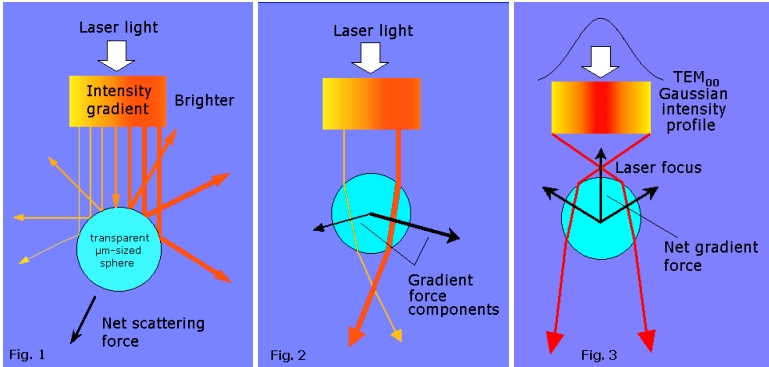The forces exerted by light are called "radiation pressure". Radiation pressure has two components: the scattering force and the gradient force. A practical application for radiation pressure was only after the invention of a very intense and monochromatic light source like the laser. Ray-optics can be used to describe the effects of a strongly focused laser beam over a transparent dielectric particle, whose index of refraction is greater than the surrounding medium. We can consider photons as particles in motion, which transfer part of their momentum to the particle (for example a latex microsphere) when they are scattered (Fig. 1). The scattering force pushes away the particle along the beam propagation direction. Some photons are not reflected and cross the interface. Their path is changed and some momentum is transferred to the particle as well, which is attracted toward the region of greater light intensity. This is the gradient force component of radiation pressure (Fig. 2). A TEM00 focused laser beam has a gaussian intensity profile, with the region of more intense light is toward the propagation axis. If the beam is strongly focused by a microscope objective, the brightest region is in the focal plane. Thus, the gradient force pulls the microsphere toward the laser focus (Fig. 3). For micrometer-sized dielectric particles, like latex or silica microspheres, the gradient force is always greater than the scattering force, so they are trapped in the region near the focus. For small displacement from the laser focus, particles can be considered as trapped in an harmonic potential well. 
|